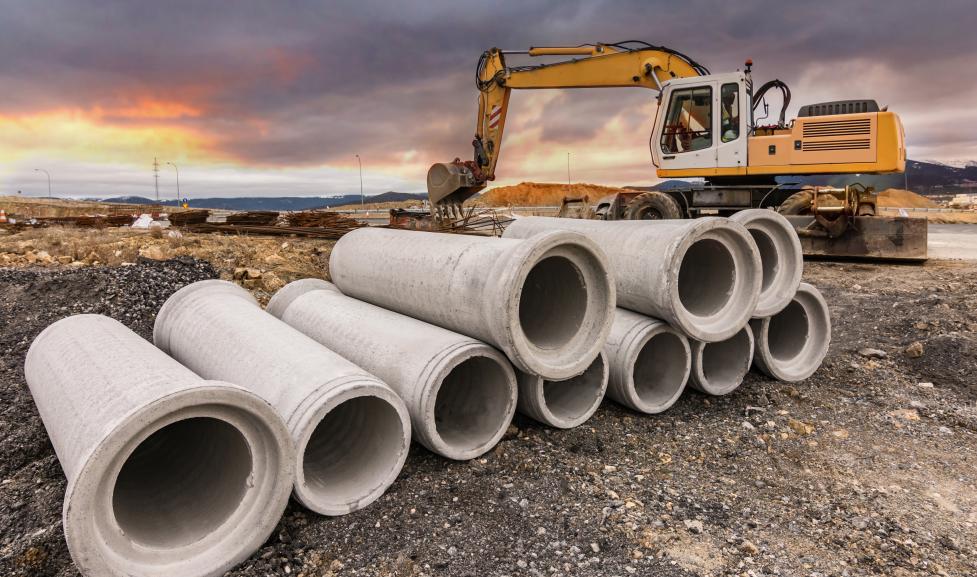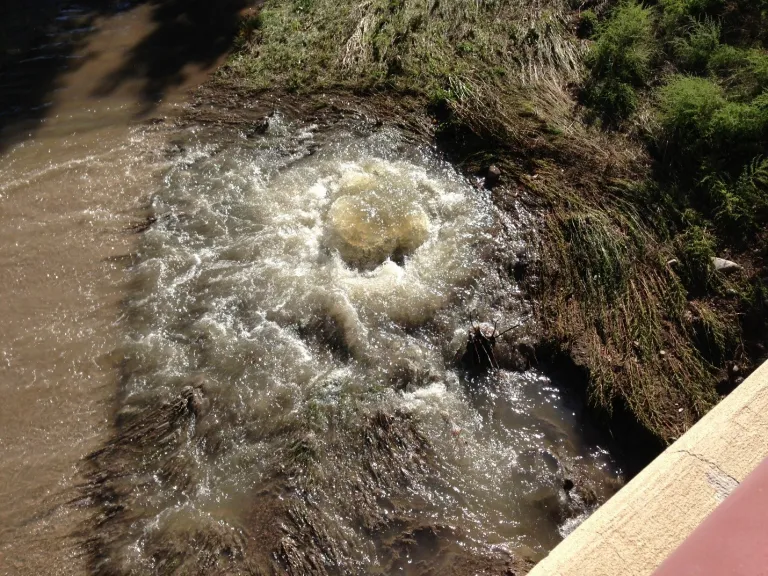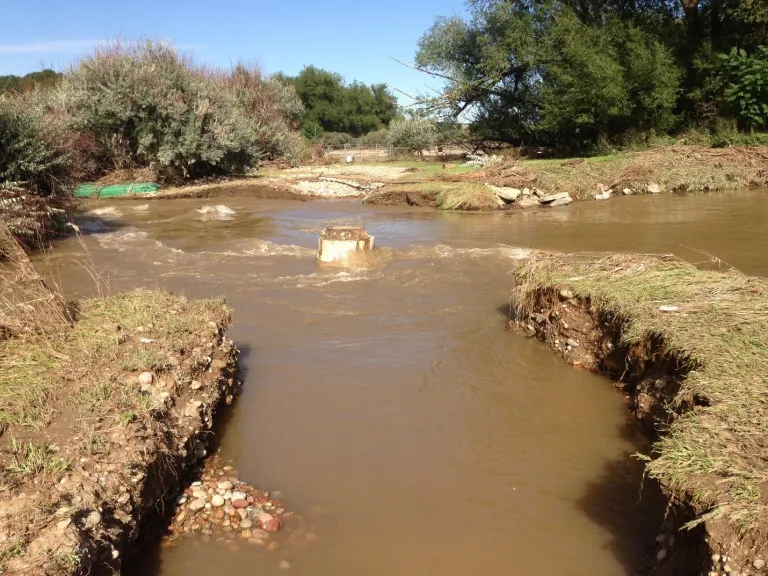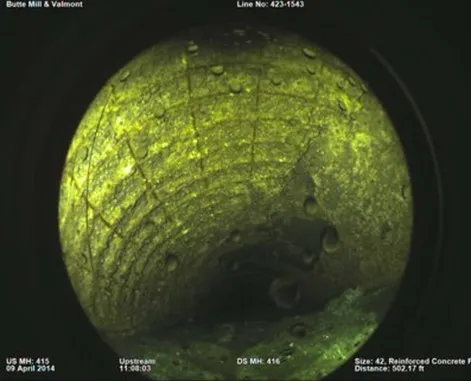In addition to the capacity concern, the existing line’s proximity to Boulder Creek is exposes the system to risk. During the 2013 Front Range flood, creek erosion fully exposed a portion of the line, and the creek was actively flowing over the pipe. Fortunately, the line remained intact, but a large vulnerability in the system was exposed, as a failure of a line of this size would have severe impacts on both the environment and utility infrastructure. Areas of the existing line that were exposed in 2013 were relocated in 2015, but the remainder of the line continues to be at risk.
Latest Updates
Watch the Inside Boulder News segment below for the latest on the Main Sewer Improvements Project.
Key Facts
The project will:
- Strengthen wastewater infrastructure by rehabilitating the existing pipeline (which is at the end of its service life and is heavily corroded).
- Protect public health by increasing wastewater conveyance capacity by constructing a new section of pipeline from Valmont Road down to the WRRF which will reduce sanitary sewer backups and wastewater manhole surcharges.
- Reduce flood vulnerability by moving most wastewater flow out of the floodway.
- Conserve the environment by decreasing the risk of wastewater discharge into the environment, by selecting already-impacted areas for the new pipeline alignment, and by using trenchless rehabilitation technologies for the existing pipeline.
The project is broken into three phases:
- Rehabilitating the most degraded portions of the existing line.
- Constructing a new line away from the creek and replacing an inverted siphon.
- Rehabilitating the remainder of the existing line.
Phase 1: Complete
Phase 1 addressed the most severely degraded half mile segment of the existing pipeline. This part of the project installed a fully structural ultraviolet light cured-in-place-pipe (CIPP) liner inside the existing pipe from Valmont Road to just north of “Pit D”, west of 61st St. The pipe was bypassed, and liner was installed between January and March of 2023. All manholes in this system were lined with an epoxy coating.
Length: 0.5 miles
Diameter: 42 inch
Installation methods: Existing pipeline rehabilitation
Phase 2: Construction in Progress, 2023-2025
Phase 2 includes constructing a parallel pipeline from the area of Valmont Rd and Butte Mill Rd to the WRRF located near 75th St and Jay Rd. A new inverted siphon will be constructed north of the WRRF to better serve the Gunbarrel community.
The upgraded systems will convey the majority of the city’s wastewater to the WRRF through a location away from Boulder Creek. Portions of the existing system will remain in place to support flows from North Boulder, as well as provide a redundant asset for this key area of the wastewater collection system.
Length: 2.5 miles
Diameter: 42 and 54 inches, dependent on location
Installation methods: Primarily open cut construction, with 2,000 feet of tunneling in bedrock in Valmont Road between Butte Mill and 61st St. Tunneling was selected for this area to minimize impacts to Valmont Rd. traffic and private wells for the Valmont community.
Community Impacts:
- Seasonal closures of trails within Sawhill and Walden Ponds for construction. Construction timing in sensitive areas were coordinated with USACE, US Fish and Wildlife Service, Colorado Parks and Wildlife, City of Boulder OSMP and Boulder County Parks and Open Space to minimize impacts to users of these spaces, as well as around a seasonal closure for a nesting osprey nest in Sawhill Ponds.
- Increased construction traffic on Valmont Rd, Butte Mill Rd, and 61st St. While the project is designed to minimize road closures in this area, there will be increased traffic for construction activities.
- Lane closures on Jay Rd, west of 75th St for inverted siphon construction.
- Impacts to individual property owners, coordinated with each property owner through easement acquisition process.
Please check the city's Cone Zones for current traffic impacts, the city's trail closures webpage for impacts to Sawhill Ponds trails, and Boulder County's trail closures webpage for impacts to Walden Ponds trails.
Phase 3: Planned 2029
Phase 3 of the project will rehabilitate the remaining portion of the existing sewer main from 61st St to the WRRF, as well as a portion around 55th St and Valmont Rd. This portion of the project will use the same technology as Phase 1 and has been strategically deferred to prioritize funding for Phase 2. Phase 3 is currently slated for in 2029.
Length: 1.5 miles
Diameter: 42 inch
Installation methods: Existing pipeline rehabilitation
Estimated Total Cost: $70M
Funding: This project is being funded through utility fees, supported by multiple bonding efforts





